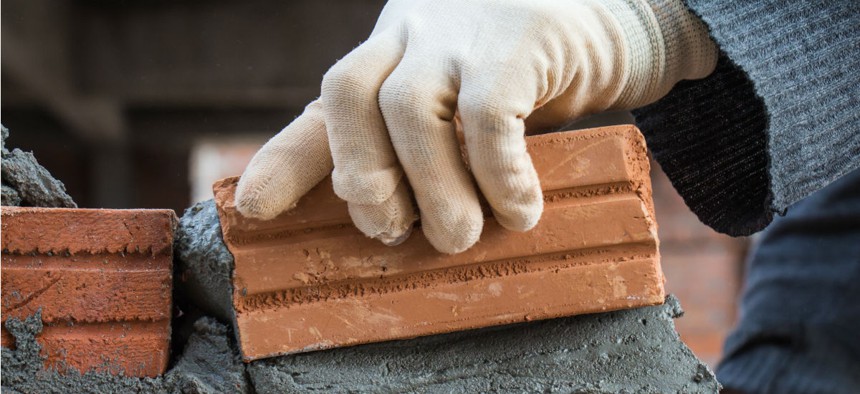Hurricane Harvey May Have Destroyed Trump’s Mexico Wall Before a Single Brick Is Laid
The cost of the storm damage is estimated as high as $100 billion.
Rain is still falling on the US’s gulf coast as Harvey, now downgraded to a tropical storm, hovers over Texas and Louisiana. Record-breaking flooding is expected to continue through the week, levees are crumbling, refineries are submerged, and thousands of stranded people may be need to be airlifted from hotels, homes, and hospitals in coming days.
The cost of the storm damage is estimated as high as $100 billion, and it could max out federal emergency funds, insurance policies, and the personal savings of local residents.
As soon as Congress comes back into session on Sept. 5, lawmakers will get to work on a federal bailout package that could be in the tens of billions of dollars. After Hurricane Sandy hit the US northeast in October of 2012, Congress passed bills that offered $60 billion in disaster relief, including nearly $10 billion in additional borrowing power for the National Flood Insurance Program.
Before the end of September, Congress also needs to pass a federal spending bill to fund the government, as well as reauthorize the NFIP, increase the US’s debt ceiling, and fund a health-insurance program for children of poor families.
That doesn’t leave much political leeway or cash for president Donald Trump’s promised wall on the border with Mexico. Before the storm, he had threatened to shut down the US government if Congress didn’t fund the wall, which is unpopular with Democrats and also some Republicans. Doing so now would be absolutely unfathomable, say political analysts and experts.
Trump’s previous shutdown threat had already upset many Republicans, says Vanda Felbab-Brown, a senior fellow at Brookings Institution, because “it came at a cost to other priorities, and it looked bad.” A shutdown now could cut off emergency funding and long-term reconstruction funding for Houston and other areas, she said, which would be a “political disaster.”
In February the government estimated the wall would cost $21.6 billion and take three years to build. While the White House may be hoping to bundle wall funding and Harvey relief together into a federal spending bill, Democrats are sure to insist that emergency storm funding be approved immediately and separately, wrote Stan Collender, a former House and Senate budget committee staffer, in Forbes.
After that’s passed, Congress is likely to turn to the 2018 budget, and come head-to-head with the White House over the wall. Many Texas Republicans, in particular, didn’t like the idea of the wall in the first place, said Felbab-Brown. Other Republicans think tax reform, lowering the national debt, or curbing entitlement spending is more important. So after Harvey, the wall “is going to be competing even harder for other money,” she said. “Politicians love to spend money on emergency reconstruction,” she said, but now they need to think about the trade-offs.
Budgetary fights between the White House and Congress are about to become “much more pitched,” she predicts. Trump so far hasn’t backed down—on Aug. 28, as Harvey was wreaking havoc in Texas, he was still refusing to rule out the possibility of shutting down the government to pay for the wall.
The White House’s Office of Management and Budget declined to answer questions about the wall. Before the storm hit, the Department of Homeland Security was planning to showcase a few prototypes of wall proposals it had received, possibly as soon as this week. So far, it has not canceled those plans, one administration official told Quartz yesterday.







